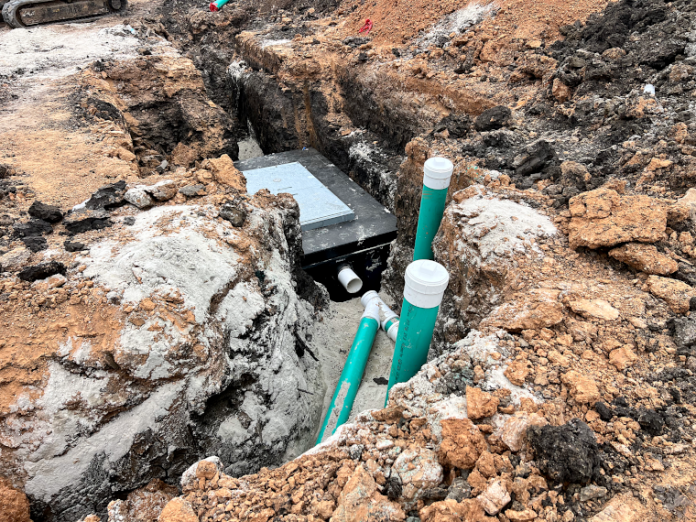Intercepting devices capture grease, metals, and debris to stop them from entering the plumbing network. There are a range of interceptor products offers various models and sizes made from robust steel and stainless steel.
As wastewater enters a sand-oil interceptor, it undergoes a two-step treatment process inside the separator. During the first step, the inflow strikes a corrugated diffusion plate that uses the Buffalo-Morse Principle to slow down the flow and form wavy patterns, allowing heavy particles to settle and oil to rise.
In the second step, the wastewater moves through the Media Pack, where smaller solids and tiny oil droplets are gradually separated. The CMP features closely aligned corrugated plates made from a material that attracts oil, causing the oil droplets to stick to the plates due to buoyancy. The arrangement of the plates creates a wavy laminar flow that encourages droplets to collide, merging smaller droplets into larger oil globules that rise through openings in the media pack. Additionally, heavier solids are set apart and deposit at the bottom of the basin.
Before the wastewater exits the separator, it hits an oil dam that blocks any trapped oil from entering the discharge pipes. An oil stopping valve at the exit ensures that no oil-contaminated wastewater leaves the system.
These interceptors are commonly utilized in various industrial and commercial settings to eliminate sand, grit, oil, and other pollutants from wastewater before it flows into a city sewer.
Automotive Repair Shops
Sand-oil interceptors eliminate oil and grease from the wastewater produced by vehicle repair and maintenance work.
Car Wash Facilities
A sand-oil interceptor aids in removing these chemicals and contaminants prior to the wastewater being released into the municipal sewer.
Industrial Facilities
Numerous industrial operations create wastewater that comprises oil, grease, and additional pollutants. Installing a sand-oil interceptor can effectively remove these contaminants and ensure adherence to environmental laws.
Gas Stations
Sand-oil interceptors extract oil and fuel from wastewater arising from refueling and maintenance tasks.
Parking Lots
Large parking lots can create notable amounts of runoff containing oil, grease, and other pollutants.


